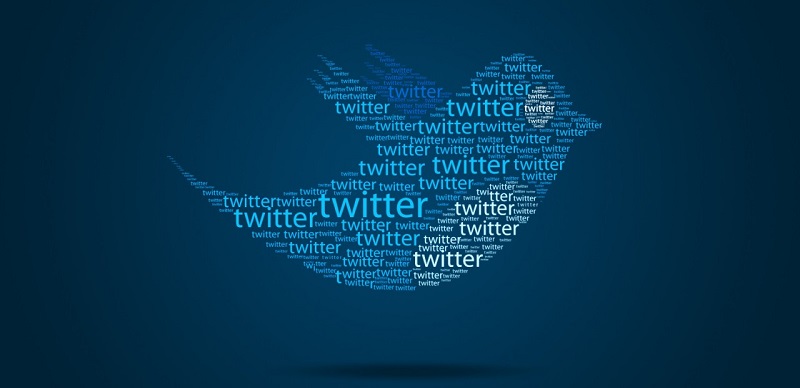After defining what Twitter (newly X) was and its weight in the social media sphere, let's look at the means the most effective to take advantage of it. Here are the good ones practice to know when you want to start communicate and to marketer on Twitter.
Note: This chapter, initially published in 2014 and still relevant today, is part of a series of course on Social Media, the summary of which can be found here.
So let's see what Twitter allow to do. Not in the conventional sense of the term, but in terms of the added value it can bring to an organization or to business leaders or managers.
Monitoring on Twitter
The first step on Twitter is – before contributing to the network – to carry out research and follow accounts that will teach us things about our work. Gently and discreetly, we will first observe. This social network which is teeming with influencers, project managers, decision-makers but also watchers will therefore serve us to carry out a monitoring our market, and to monitor our e-reputation.
Twitter to monitor your market
Monitoring your market means following everything that is said about its sector, on its competitors, its suppliers or stakeholders, or what these competitors are saying. Growth, new uses, innovations, takeovers, bankruptcies... For these kinds of needs, Twitter has undoubtedly revolutionized things, because it has allowed easy and fun access to market information.
Simple example: if a chicken supplier for McDonald's is the subject of an emerging bad buzz about a video showing possible mistreatment of animals, the client brand (McDonald's) must be able to quickly measure the impact viral of this video in order to react as quickly as possible. In this sense, Twitter is a fantastic tool for taking the real-time temperature of the web.
The micro-blogging social network has enabled even small structures to make their own press panorama, and to find out at a lower cost about developments in the sector.
But in practice, how do you go about monitoring Twitter?
- First of all, do keyword searches : this is the first reflex that comes to mind, and which should allow you to find tweets relating to your sector, but also Twitter accounts to follow.
- Afterwards, follow people who have tweeted about topics or keywords that interest you : because these people are likely to continue to do so and inform you about your sector.
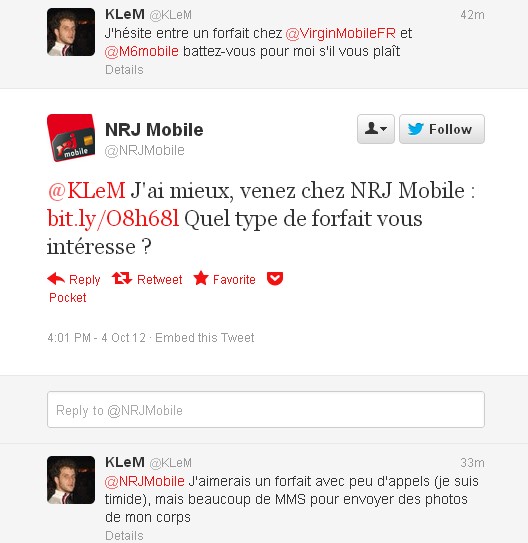
After this first phase of trial and error, you should gradually be able to create your own press review based on the following that you have made, and which become more and more relevant.
- Identify professionals in your sector of activity, the influencers of your expertise. Follow them and network with them: you certainly discover yourself in the market, but you also rediscover it.
- Create public and private lists : the first will allow you to follow, for example, “Social Media” news in complete transparency, by sharing this list with your followers, while the second will be lists organized and identified but which you do not wish to reveal as such (a “competitors” list for example!).
How to Create Twitter Lists
To do this, nothing could be simpler, click on “Me” (your profile), then on “Lists”, and finally on “Create a list”. Give your list a name, a description, and then make it public or private.
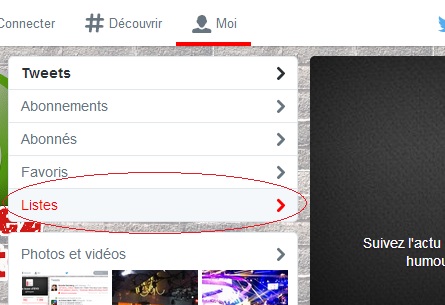
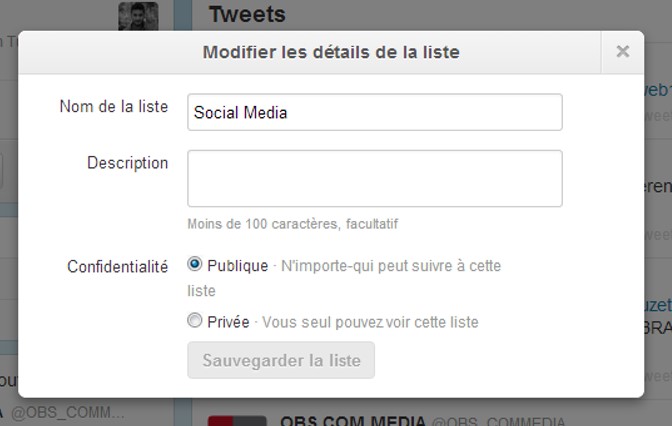
To add someone to one of your lists, go to your subscriptions or their profile, and click on “Add or remove from your lists”.
Twitter to monitor your e-reputation
Monitoring your online reputation is done using the same means as market monitoring. So, monitoring what is said about your brand has several advantages:
- Know what people say about you
- Quantify what is said about you
- Detect a good or bad buzz that concerns you directly or indirectly
- React quickly
Better than a thousand words, the example of GAP and the racist tag
On November 25, 2013, a journalist questioned the GAP brand regarding a racist tag on one of its advertising posters featuring Sikh actor and jewelry designer Waris Ahluwalia.
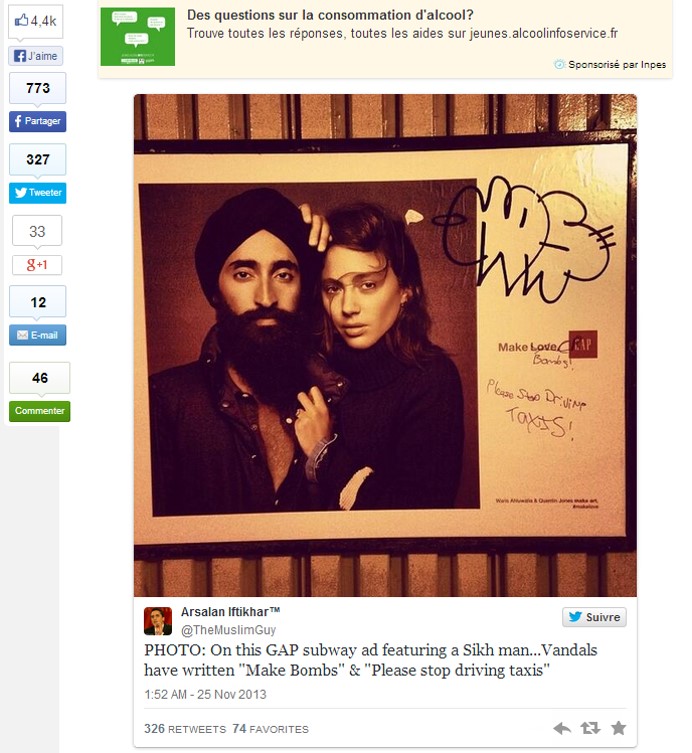
GAP reacted very quickly, and asked to make contact to find out where the poster in question was located.
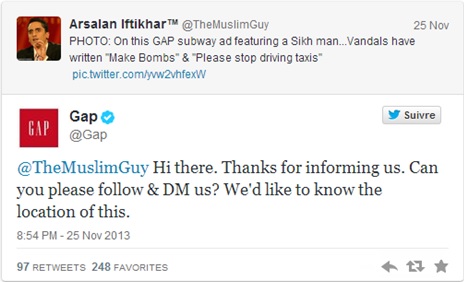
However, the brand was not satisfied with this. To show support and solidarity to Waris Ahluwalia, she changed her Twitter cover photo to include the ad :
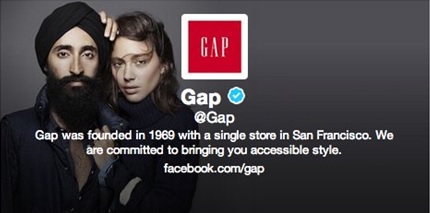
Jackpot for GAP in terms of notoriety and image. By being very responsive and showing support for its muse, the brand defends its ethics on the one hand, and proves on the other hand that it listens to feedback.
This example brings together all the ingredients of good 2.0 image management:
- Initially, a bad buzz that the brand can do nothing about
- Then, very good responsiveness
- Finally – and this is the most interesting point of this example – the intelligence of taking advantage of the stupidity of others to work on your brand image
In other words, GAP took advantage of an individual's negative action to shine better. A very opportunistic way of getting people talking about yourself, which the press did not fail to do in several articles praising the brand:
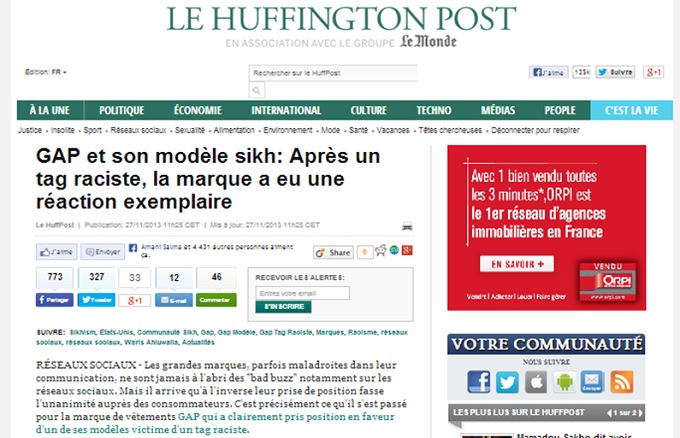
Promote your products and services on Twitter
Once you have taken control of the tool as a “follower”, it is time to take action. Twitter can then be used to broadcast news relating to your products, services or competitions. In other words, yet another promotion channel for your brand.
Thus, your blog articles are welcome on Twitter, in order to generate traffic to your website. Provided you have a certain number of followers, which involves a crucial stage of following, networking and discussion with Twitter users.
Access to the role of influencer, when you are not a famous brand, necessarily goes through a chat stage. I refer you to the typology of tweeters to fully understand these roles.
Build customer relations on Twitter
- 56% of a brand's Twitter followers are more inclined to buy the brand's products or services since they have followed it, compared to 47% of fans of a Facebook page.
- 51% of consumers believe that the absence of a brand on social networks generates a negative image!
Therefore, the simple presence on Twitter constitutes almost a commercial argument. All that remains is to communicate with your prospects and customers, to answer your consumers' questions, in short, to establish a real customer relationship. By doing this, you send a positive, current image and you show that you are responsive to the questions that your customers may ask. Ideal in terms of branding.
Do after-sales service on Twitter
Beyond simply relaying news, Twitter can also act as an after-sales service. Although this media does not replace traditional after-sales service, it nevertheless already makes it possible to answer a large part of the questions in a rapid, efficient, transparent and public manner.
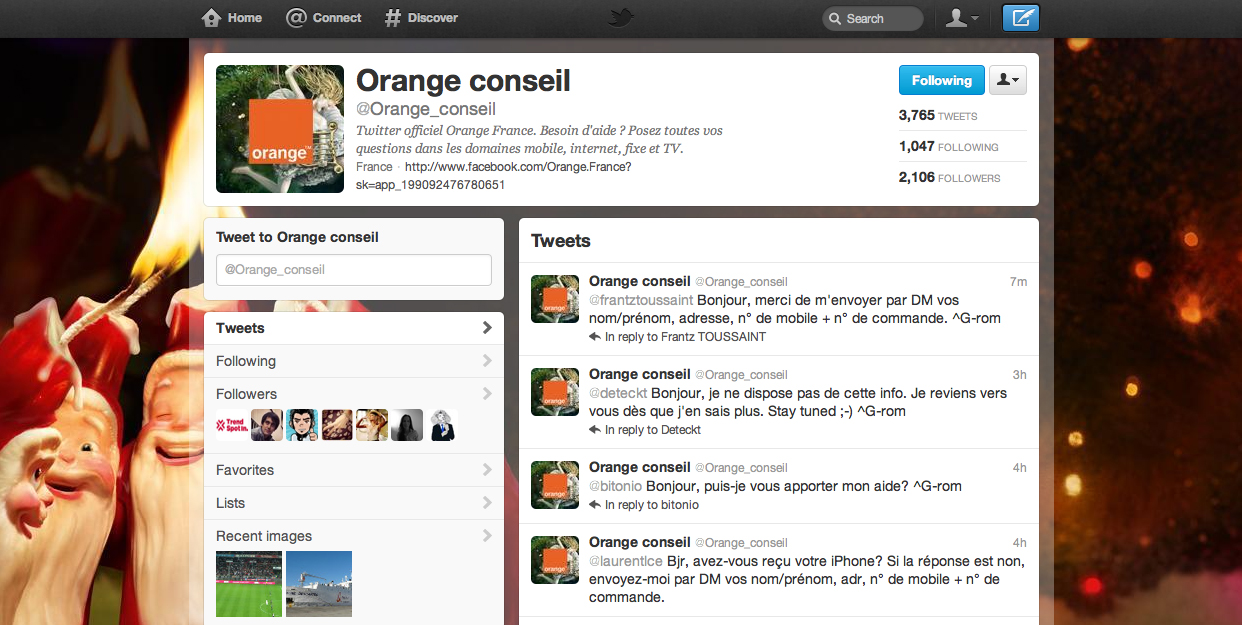
This has positive consequences in terms of image, since the brand publicly shows that it takes great care of its consumers who ask questions. The company therefore wants to be connected, current, responsive and attentive.
On a practical level, you must create a Twitter account separate from the official account, react quickly enough, invite questioners to send DMs for personal data, retweet customers satisfied with the after-sales service, and redirect the customer to the service if necessary. adequate.
Do Social TV on Twitter
Social TV refers to the conversation that develops online about what is happening on the small screen. An activity that is of increasing interest to the channels. And for good reason, 7.2 million Internet users have already posted a comment online on a TV program, i.e. one in five internet users. The forecasts of Seevibes count on more than 100 million tweets related to television programs:
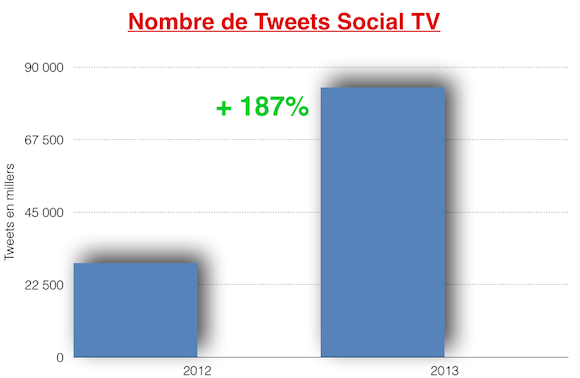
Due to its format which lends itself very well to live, Twitter is the ideal platform for doing Social TV. Through the simplicity of its interface, the social network plays a decisive role in conversations related to programs, especially when they are live.
“This increased link between Twitter and TV can be explained by a common DNA. TV is par excellence the unifying media, live, event, while Twitter is a live, public and conversational platform. »
Justine Ryst, Development Director of Twitter France
In practice, starting a conversation related to a TV show involves choosing a hashtag. Therefore, participating to improve your visibility involves using the hashtag chosen by the channel. Then, for a brand that participates in the debate, it's about playing the game: interacting, tweeting the right word at the right time, and practicing humor when necessary.
On the channel side, this allows your show to be displayed in Twitter TTs, and to build a communication argument for advertisers.
Corporate communication on Twitter
Twitter can also be used for global external communication, in addition to after-sales service and customer relations alone. We can relay the latest news promoting the brand, the latest sponsorships, nominations, the latest TV advertising, etc.
The brand can then opt for two complementary choices:
- Institutional communication: via a corporate account.
- Personal communication but linked to the brand: via a personal account of one of the company's managers.
Example: the Universal Music France Twitter on one side, and its President Pascal Nègre the other.
Just like Instagram, Twitter can serve as an advanced base for representatives of a company: TV, radio presenters or journalists for the press on one side, executives, directors and employees for the tertiary sector on the other side.
It is therefore in their own name what can these representatives sent to the digital front be used for?
Why leaders should represent the company on social media
For a simple reason: those who run the business are sought after by Internet users! Indeed, 33% Internet users Google the leaders to find out more about their career and their biography. 29% Google them to find out more about the economic news of their company, 12% to find out their recent appointments or changes of position, and finally 11% to find out their salaries (especially for CAC40 company managers).
The personality of managers is therefore one of the concerns of the company's stakeholders. And both in terms of B2B and in terms of B2C! And some managers understood this very quickly, starting for example with Dominique Giraudier, from the FLO group (hippo, tablapizza, Roman Bistro etc.), who very quickly began blogging in his name (even if he stopped since), and who had made humble and transparent communication “one of its priorities”.
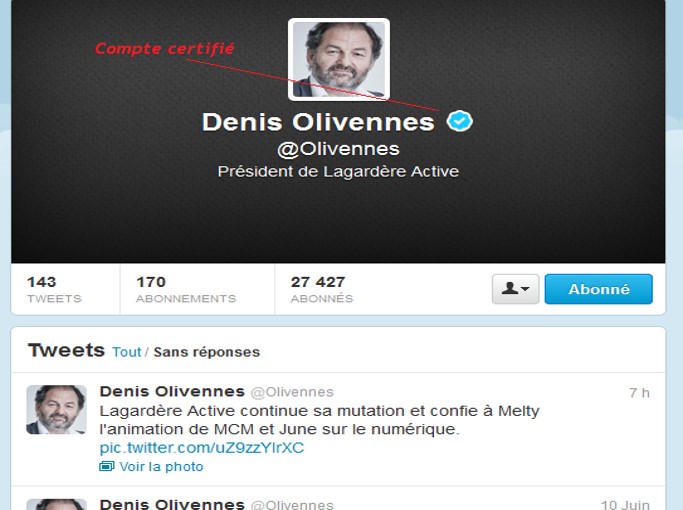
Other leaders subsequently set an example, such as Delphine Ernotte Cunci (Executive Director of Orange) who was one of the first to get on Twitter, but also Bruno Patino (France Télé), Clara Gaymard (General Electric France), Serge Papin (Système U), Alexandre Bompard (FNAC) or again from Geoffroy Roux de Bézieux (candidate for the presidency of Medef, boss of Virgin Mobile France), etc…
What communication for a manager on Twitter?
Twitter is a platform that is particularly suitable for networking and personal branding. Consequently, a leader or top manager has every interest in being relatively active there. There are multiple interests for the decision maker:
- Do personal monitoring and follow sector information: by following the right people, the business manager transforms his timeline into a real press review.
- Deny false information.
- Embody a modern, current and accessible image of employers, which finds itself catapulted to the center of the ecosystem, thus breaking the image of an inaccessible ivory tower disconnected from reality from which decisions are made.
- Network, expand your professional network, interact (more than on LinkedIn in any case), become a referent and an influencer, for yourself and for your company.
- In terms of image and communication, represent, promote and promote your company: by being active on Twitter, the manager proves that his company is too, and sets an example to his subordinates.
What about institutional communication on Twitter?
In terms of external communication, 16 % French companies had a Facebook page and 7 % a Twitter (figures dating from 2012).
This type of institutional communication on social networks makes it possible to supplement or relay traditional press releases, make announcement effects, enrich the commercial pitch and finally, create a privileged list of followers, particularly on the B2B level.
This is a way of using Twitter that can be more secure and traditional for some managers. Not all top managers necessarily want to tweet in their own name, and this choice allows for more standardized and controlled communication, if not original and fun.
Personal branding VS Corporate communication
Each path has its advantages and disadvantages. If one sometimes allows you to have more impact, the other has an infinite lifespan over time since it is entirely linked to the brand.
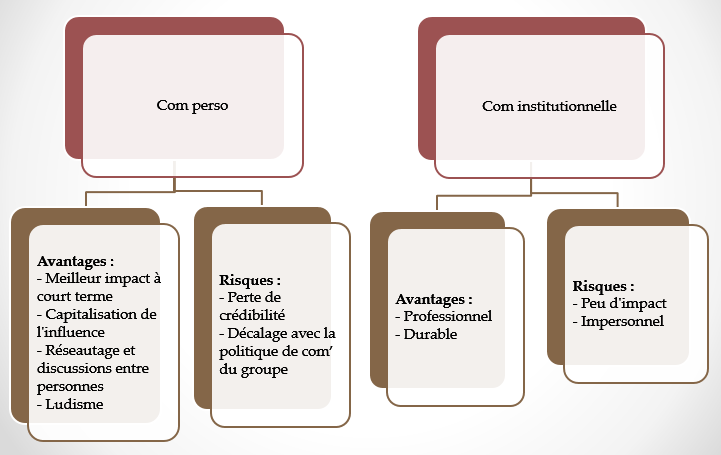
Do sponsored advertising on Twitter
One of the possible solutions allowed by Twitter to gain advertising is simply advertising. Twitter provides several tools to organize its social campaigns on the network. The brand can become a “sponsored account”, emit “sponsored tweets” or even appear in trending topics as “sponsored trend”.
Become a Sponsored Account on Twitter
Being a sponsored account means being offered the location on the left of Twitter, in the suggestions for accounts to follow:

By being a sponsored account, you are charged the cost per follower who decides to follow you. You must therefore enter the daily budget that you wish to allocate to your campaign, a range of cost for acquiring a new subscriber (which varies between $0.50 and $2.50), and the location.
The engagement rate for this type of campaign is estimated between 0.2 and 0.5%.
Send sponsored tweets on Twitter
Promoted tweets are displayed in the stream of tweets, on the timeline of tweets that belong to the segments you have selected beforehand, or in the search for a particular keyword:

Sponsored tweets are charged per click, the price of which ranges between $0.50 and $1.50. Targeting is done by large category, then level 2 category, then by personalized segments.
Sponsored trends
Sponsored trends consist of a brand being exposed in the trending topics of a given country for a certain time. Massive exposure, which benefits from a fairly strong engagement rate oscillating between 7 and 13% on the tweet located behind the trend. In France, TT placement is estimated at €5,000 for 1 million impressions. In the United States, it would be $200,000 for 24 hours of exposure.
Some examples of campaigns that pleased Twitter
Oreo's tweet during the Superbowl blackout (when I was talking to you about humor):
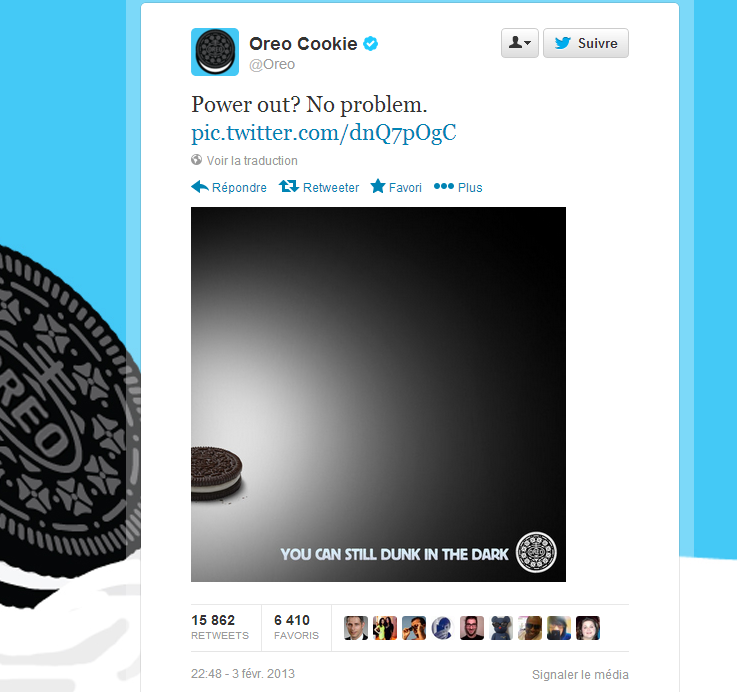
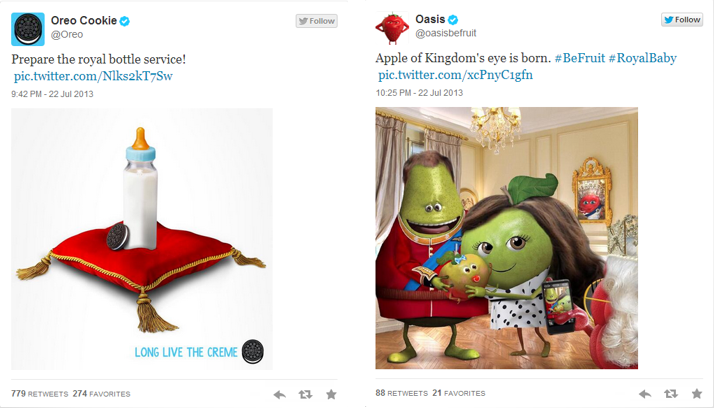
On YouTube, a campaign which created a monumental buzz, and which was widely relayed on social networks, including Twitter. That of the HelloFlo brand, which delivers products to girls becoming women. A short film that cost $6,000 and generated 7 million views…
Another very successful advertisement, which accompanied a communication plan for Internet Explorer called The browser you loved to hate, and which very skillfully plays on the bad reputation of Internet Explorer, before versions 9 and 10:
Twitter: networking, interaction, added value and touches of humor
By way of conclusion, we will say that on Twitter, the key words are interaction, sharing, providing added value to your followers, and touches of humor. For a brand, it's about playing the game of interaction, giving in order to receive better, and sometimes using sarcasm and derision. Indeed, Twitter is the social network where humor and puns are extremely popular. A touch of humor, and it's guaranteed RT...
Chapter 4: How to deal with trolls and haters »
« Chapter 2: Introduction to Twitter, key figures and behaviors
